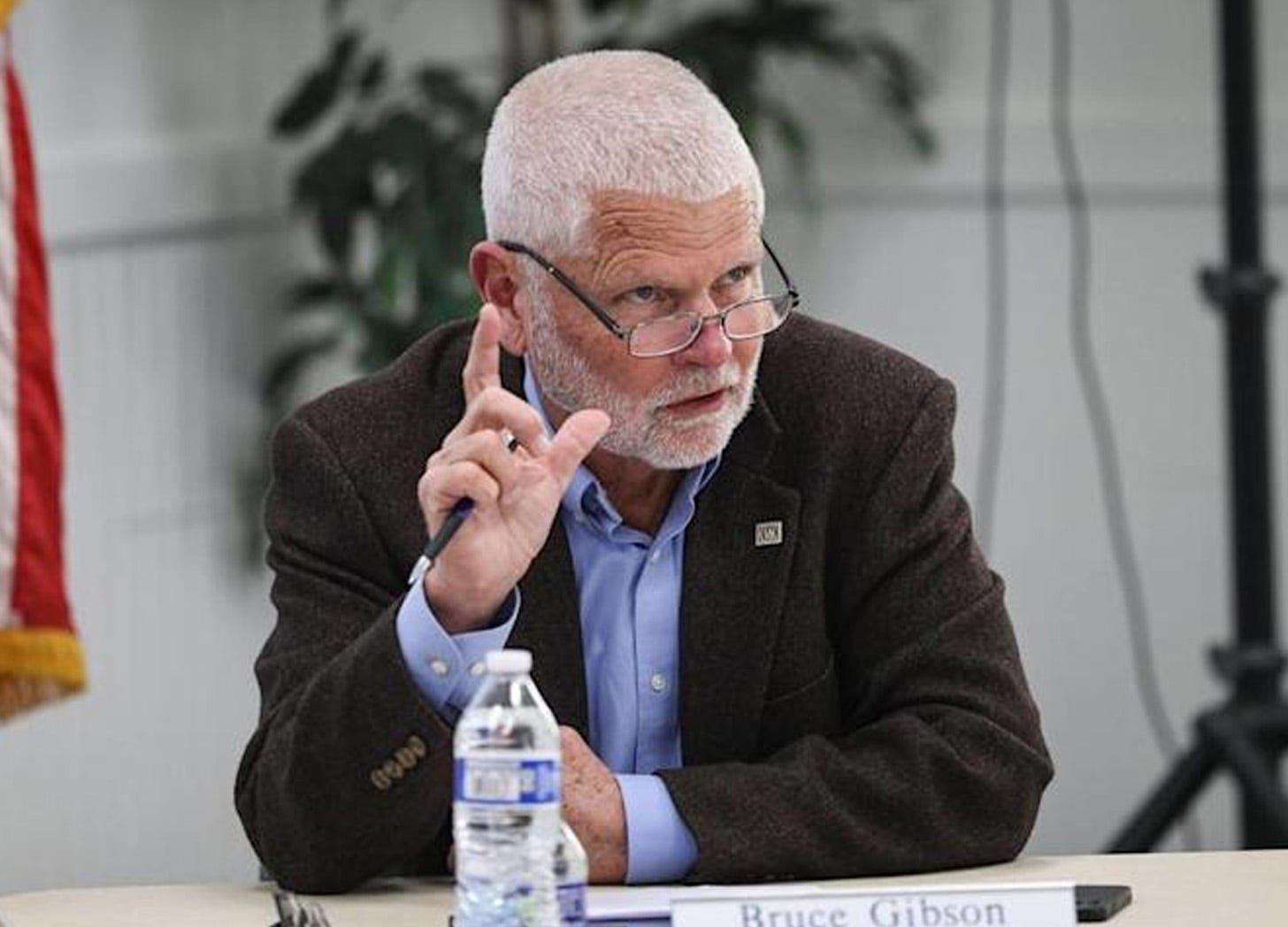Bruce Gibson's Long Goodbye
A Legacy of Service, a Challenge for the Future

Initially, Bruce Gibson and I did not see eye-to-eye.
It was 2006. I was twenty-one when Gibson was first elected SLO County supervisor. As a Los Osos resident at the time, I opposed the Los Osos wastewater project as proposed by the county because I felt that better, innovative, and more environmentally friendly solutions were available to bring costs down — in an unincorporated area full of working-class families and residents living paycheck to paycheck. And I was frustrated with Gibson, who had a knack for making dismissive remarks about concerns raised by Los Osos residents. He called critics of the project a “vocal minority” and often brushed off feedback from the dais during Board of Supervisors meetings. It was difficult to engage with him. He hosted limited office hours where terse, transactional exchanges were the norm.
But the story of Bruce Gibson is one of evolution.
After the wastewater project was completed — a controversial and painful chapter in District 2 history — Gibson eventually became more conversational, if not always conciliatory, about issues in the district. He still wrestled with a confrontational streak at the board, and his critics often pointed to his sharp rhetoric and perceived personal attacks on political opponents. He frequently aligned himself with former District 3 Supervisor Adam Hill, whose suicide in 2020 occurred amid a federal investigation into corruption. Despite their close working relationship, Gibson was never formally implicated in wrongdoing. Still, the shadow of guilt by association lingered. His critics hurled accusations, but they never brought receipts.
Now, after two decades in office, Gibson is stepping away. He announced earlier this month that he will not seek reelection in 2026. “The short answer: It’s time,” he wrote in a newsletter to constituents.
It is the end of a significant political era in San Luis Obispo County.
Gibson’s career spanned a generation of political, economic, and environmental upheaval. From Cambria to Cayucos, San Simeon to SLO, Gibson became a recognizable constant — a familiar voice in a time when local government was anything but predictable. He shepherded infrastructure projects, protected open spaces, and advocated for fiscal responsibility. He was instrumental in securing funding for the Cambria Veterans’ Hall restoration, safeguarding the Toro Creek acquisition to preserve coastal access, and pushing for smart water management in a region where water scarcity is an existential threat.
Gibson wasn’t always easy to work with — but for many, that was the point. He could be stubborn, but that stubbornness often came from a place of conviction, particularly when it came to environmental stewardship and resisting reckless development. During the COVID-19 pandemic, when public discourse reached a fever pitch, Gibson emerged as a voice of calm and fact-based governance.
His announcement struck a reflective tone, signaling not a retreat but a redirection. He says he won’t run for another office “at this time,” but he hasn’t ruled it out. He’s still interested in tackling what he calls “the mess we call our national government” —a mess he rightly links to growing anti-democratic forces, especially in the wake of Trump-era politics. And he encouraged District 2 residents to engage deeply in the 2026 election that will determine his successor.
That call to action shouldn’t go unnoticed.
Despite Gibson’s consistent electoral success over five terms, District 2 has struggled to develop new leaders ready to carry the mantle. Many residents — particularly older ones — were satisfied with the stability Gibson offered. But younger generations, increasingly priced out of communities like Cambria and Morro Bay, have had little incentive or opportunity to step forward for nearly twenty years. This is a challenge not just for the district, but for SLO County as a whole: how do we build intergenerational leadership in communities where the cost of entry — both economic and political — is so high?
Gibson’s departure creates a leadership vacuum. But it also creates an opportunity.
For all the criticisms I once had — and at times still have — about his political style, Bruce Gibson undeniably served this county with tenacity and intelligence. His exit deserves more than a polite goodbye. It demands that we ask who will fight for the environment, for working families, for housing and health care, for water security, when he’s gone. And who will do it differently, perhaps with more humility and openness, but with the same depth of commitment.
“Your engagement in these local and national efforts is essential to the future of SLO County and our nation,” Gibson wrote. He’s right. Democracy is not a one-person job. It’s a collective effort.
Now, District 2 must decide what kind of supervisor — and what kind of future — it wants next.
